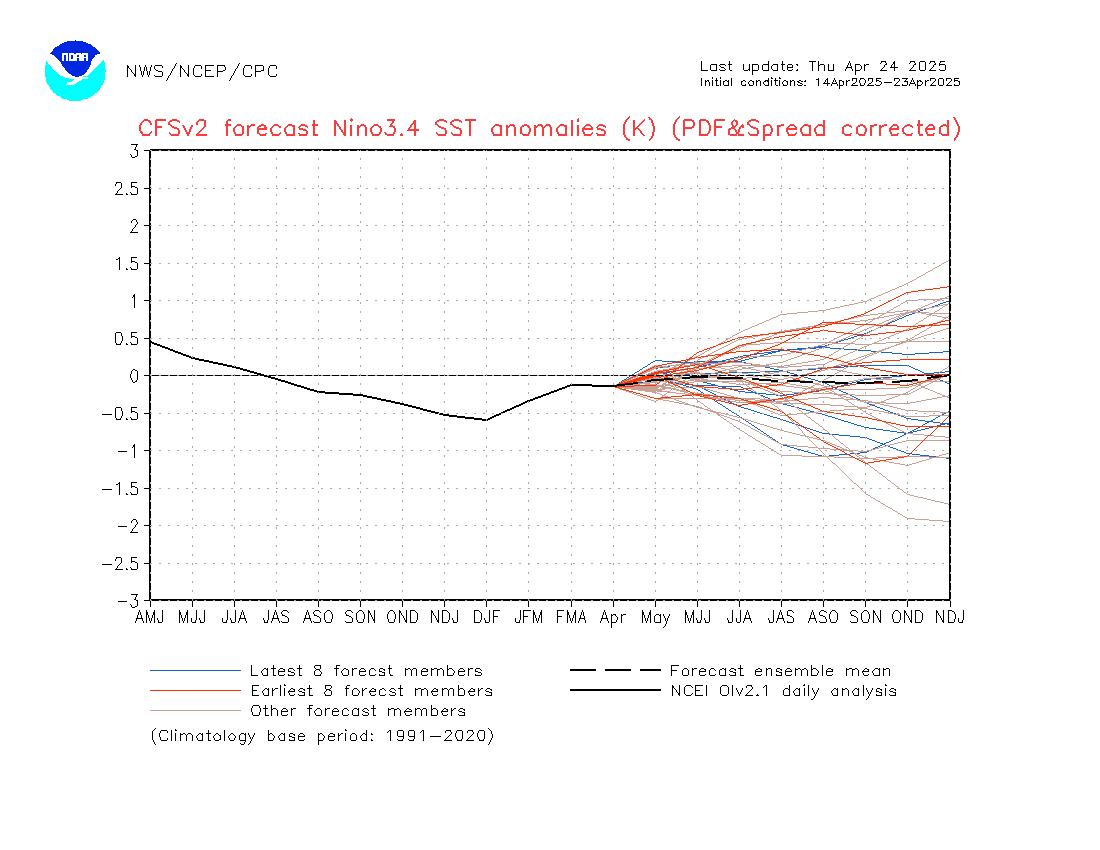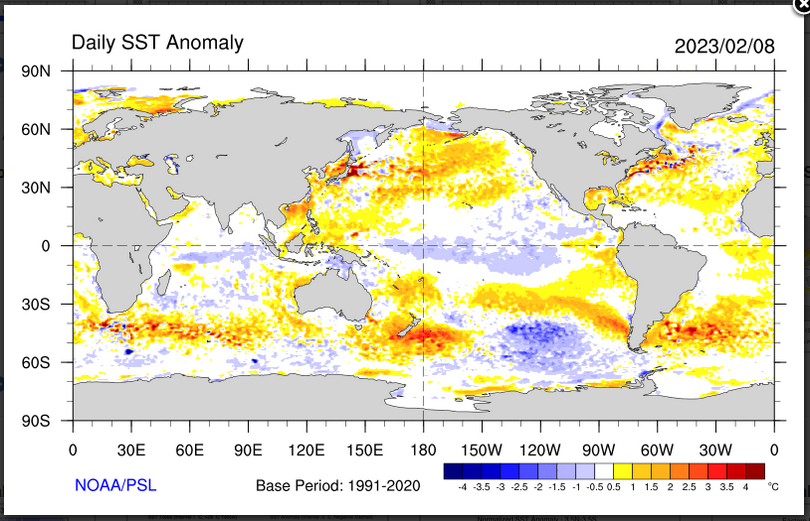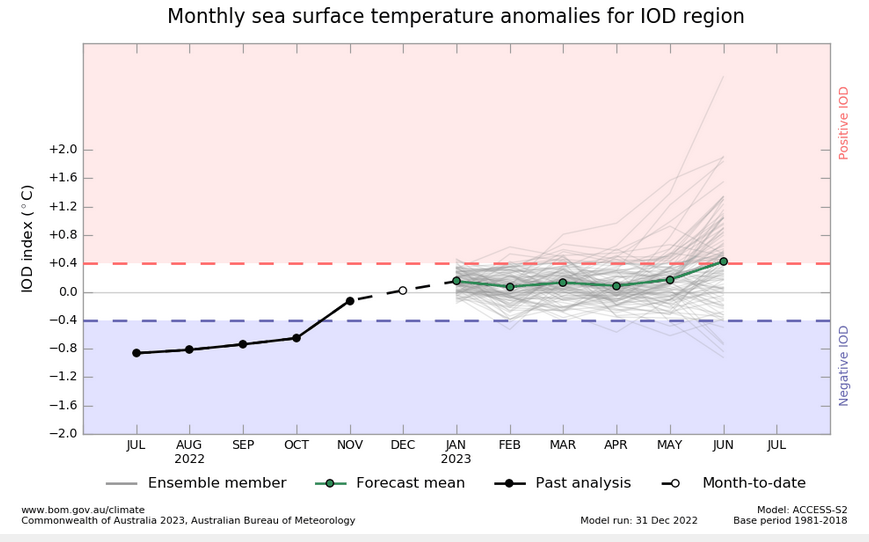Updated at 3:23 p.m. EST Friday, February 10 to include a second interesting ENSO Blog Article. You have to click where shown to read them.
On the second Thursday of every month, NOAA issues its analysis of the status of ENSO. This includes determining the Alert System Status. The best guess remains March.
This may seem like a repeat of our article from last month and in a way it is since the situation has not changed. But no change increases the confidence in the forecast.
And again some of the models suggest a rapid change to El Nino. It seems likely that the ENSO Neutral Phase will at the very least have an El Nino bias.
Because the situation has not changed, we have published a shorter version of our usual article since there is little disagreement that we are transitioning away from La Nina. It is also a bit too early to examine the potential for an El Nino. We need to get past the Spring Prediction Barrier (SPB) to be confident about having an El Nino soon.
The article includes two very interesting posts from the ENSO Blog. They are worth reading.

| Announcement: We now publish a daily weather report that addresses U.S. weather near-term through four Fridays and a five-day Global weather forecast. You can find it at econcurrents.com. To return to this article just hit the return arrow at the upper left corner of your screen |
CLIMATE PREDICTION CENTER ENSO DISCUSSION
| The second paragraph is what is important: “The most recent CPC forecast indicates La Niña will persist into the Northern Hemisphere winter 2022-23, and then transition to ENSO-neutral in February-April 2023.” We interpret February through April to mean March the middle of that three-month period. |
| We now provide additional detail. |
CPC Probability Distribution
Here are the new forecast probabilities. This information in the past has been released twice a month and the first release is based on a survey of Meteorologists, the second is based on model results. The probabilities are for three-month periods e.g. JFM stands for January/February/March. The first forecast is used to develop the Seasonal Outlook which will be issued next Thursday so that is what I am focusing on.
Here is the current release

And here is the forecast from last month
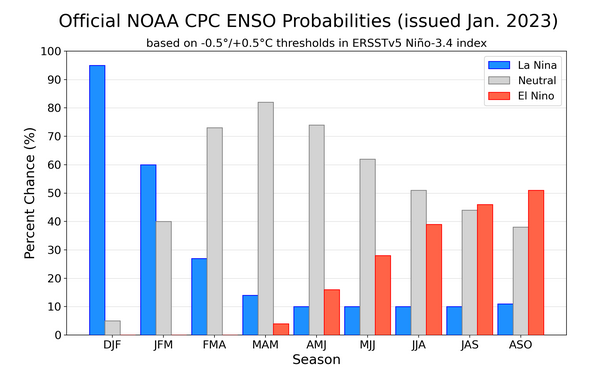 And here is the forecast from the prior month
And here is the forecast from the prior month
| There is essentially no change for three months. But the chances of an El Nino seem to be increasing. |
What Does the NOAA Proprietary ENSO Model Forecast?
The above does not auto-update but you can view and update by clicking HERE. But the current reading is what is relevant in terms of the NOAA ENSO analysis released on February 9, 2023
| This model shows the scatter in the forecasts. So it is difficult to have a lot of confidence in the ENSO situation later in 2023 other than it is not likely to be La Nina. The dark dashed line is the mean of the ensemble forecasts. NOAA tends to put more weight on the probability results that come out of their work with IRI but the two sets of results right now seem to be very similar. |
And BOM? (Australian Bureau of Meteorology
| BOM has a different cut-off for La Nina than other meteorological agencies but they see a more rapid end (right now) of this La Nina. Based on their criteria, La Nina will end this month. Also, notice the movement toward El Nino. |
What do Other Meteorological Agencies Say
–
| What I am showing here are NINO 3.4 forecasts for June of 2023. These are well-respected models. And using the U.S. threshold of -0.5 C they show that we will be in ENSO Neutral with an El Nino bias or in El Nino by June. Here is the link for this report and other ENSO information from BOM. |
But let us look out a little farther
–
| By June the models ae edging towards El Nino and using the U.S. criteria many models are predicting El Nino by June. At any rate the predictions are calling for ENSO Neutral with an El Nino Bias. |
Looking at Actual Current Conditions.
NOAA reports some derived data that describes the current situation and a forecast. But what if we want to form our own opinion? After all, meteorologists are looking at the actual current situation and making predictions.
This shows the current actual situation for the surface of oceans.
| Notice the cool water is almost all south of the Equator but the pattern extends to the west more than usual. To update this graphic click HERE. To the north, It still looks like PDO NEG with the warm water way out to sea. |
Putting the historical information in motion (Updates can be found HERE.)
 Where is ENSO Measured?
Where is ENSO Measured?
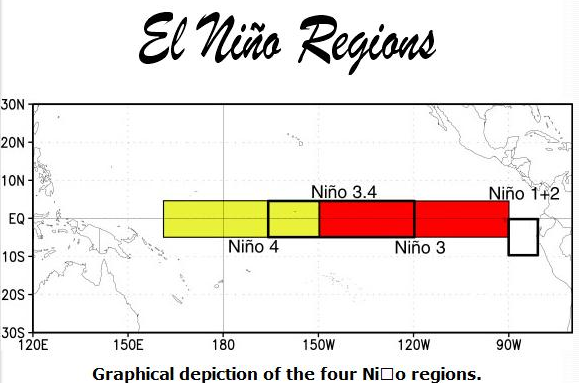
–
You can mentally superimpose the Nino 3.4 area shown encompassing part of the yellow and part of the red areas in the above map and you can see that it is cool in the Nino 3.4 area especially South of the Equator. That is an oddity of this La Nina that is both westerly displaced and focused mostly south of the Equator. There is not much discussion of that and how that might impact our weather. It certainly explains why the NINO 3.4 Index is still in La Nina territory but warmer than last month.
Mapping the details. (Cross-Section along the Equator)
The data is a five-day average centered on the date shown.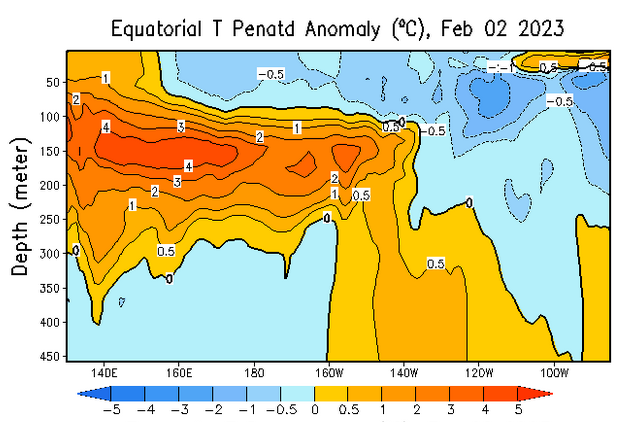
And Last month
| All I see is a lot of cold water (what is shown is anomalies compared to climatology for location and time of year. I am not showing more than one of the prior versions this time. But the above is clearly la Nina and the warm IndoPacific Warm Pool shows no indication of moving east to replace the cool water that defines a La Nina. The cool anomaly is mainly south of the Equator (can not see that in the above graphic) and it extends far to the west (which you can see) making it what the Japanese call a Modoki. So I do not see the change. |
–
Are the changes significant? We need to look at additional information.
I abbreviated this section tonight because it seems that we can be confident that we will soon be out of La Nina conditions in terms of the sea surface temperatures in the Nino 3.4 measurement area but is the atmosphere responding?
| The SOI has been falling which is consistent with the end of La Nina. But the SOI fluctuates a lot. |
| My conclusion is the models probably have it right. |
This From the NOAA ENSO Blog is an interesting Post by Emily Becker
You can read her blog post by clicking HERE
Here is another interesting article
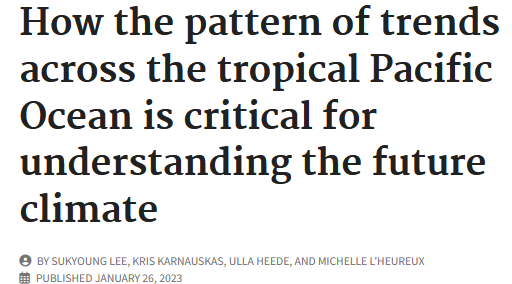
You can reach this blog post by clicking HERE
What about the Indian Ocean Dipole (IOD)?
| The index is calculated as the monthly difference between the western (10°S-10°N, 50°-70°E) (WTIO) and eastern Indian Ocean (10°S-0°, 90°-108°E) (SETIO) sea surface temperature departures from average. |
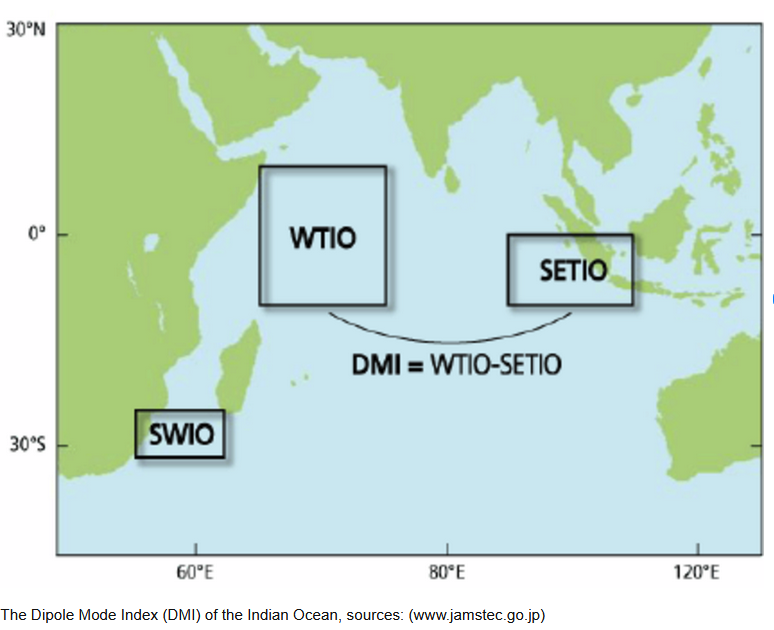
–
Australia BOM IOD forecast
–
| The IOD seems to possibly reoccur this summer. So I am not going to discuss that in detail tonight |
| I hope you found this article interesting and useful. |


